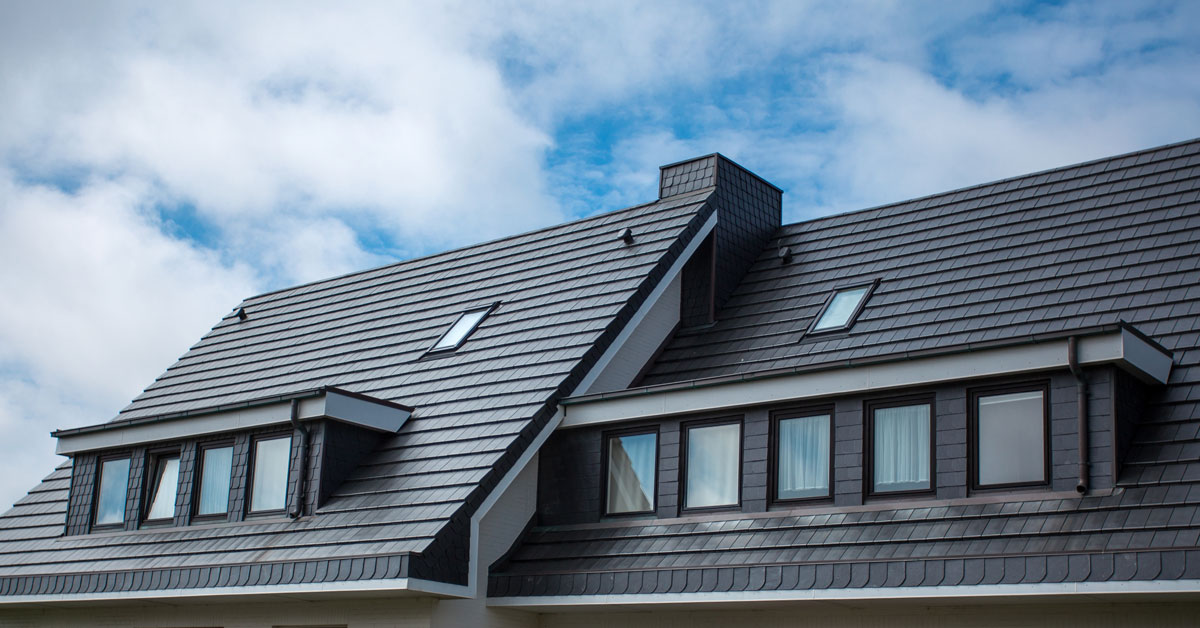Just How Gainesville Roofing Companies Can Change Your Home's Outside
Wiki Article
Ideal Practices for Ensuring Proper Roof Covering Ventilation
Ensuring correct roof air flow is crucial for the durability and performance of a roof. A balanced consumption and exhaust vent ratio, frequently 1:300, plays a pivotal duty, with consumption vents preferably positioned at the reduced side of the roof for amazing air entry and exhaust vents at the height for cozy air departure. Normal evaluations to identify clogs and preserve clear air flow are critical. Keeping insulation away from vents is crucial to avoid air movement limitation. Understanding these foundational components sets the phase for even more in-depth understandings right into installment and maintenance methods that can considerably improve your roof's efficiency.Understand Ventilation Fundamentals
Appropriately comprehending air flow basics is necessary for making certain the longevity and effectiveness of roof. Efficient air flow mitigates dampness accumulation and temperature extremes in the attic room, both of which can lead to considerable architectural damage with time. A well-ventilated roof covering aids in stopping usual problems such as mold growth, wood rot, and ice dams, which can jeopardize the integrity of the roofing materials and the underlying structures.The primary goal of air flow is to promote the activity of air, enabling a consistent exchange between the exterior and indoor atmospheres. This balance is attained with a combination of intake and exhaust vents that collaborate to maintain optimum air flow. Consumption vents, usually situated along the soffits or eaves, allow fresh air to go into the attic space, while exhaust vents, usually situated at or near the roofing system ridge, enable warm, humid air to run away.
Key variables affecting the efficiency of roofing ventilation consist of appropriate placement, appropriate sizing, and making sure that both intake and exhaust vents are unblocked. Normal examination and maintenance are critical to recognize prospective blockages, damages, or ineffectiveness in the ventilation system, consequently safeguarding the roof covering's performance and resilience.
Sorts Of Roofing System Vents
Roofing vents play a crucial function in keeping efficient attic room air flow and, by extension, the general health and wellness of the roof system. Different kinds of roof covering vents are available, each with special advantages customized to specific roof covering needs.
Soffit vents are installed under the eaves and job in tandem with roof vents to guarantee a well balanced intake and exhaust system. By enabling cooler air to go into from below, soffit vents help with the expulsion of hot air through upper vents. Gable vents, situated on the exterior wall surfaces of the attic room, deal another effective option, particularly in homes with saddleback roofs.
Evaluate Your Present Ventilation

Next, think about the age and problem of your roof materials and air flow components. Older systems might not abide by existing building regulations or might have weakened with time, lowering their performance. Conduct a thorough assessment to identify any type of signs of deterioration, such as corrosion, damage, or voids that might jeopardize the system's performance.
In addition, gauge the attic room temperature level and moisture degrees. High temperatures and humidity can suggest insufficient ventilation.
Installation Best Practices
Efficient installment of roof covering air flow systems is critical for making sure optimum efficiency and longevity. Correct installment starts with understanding the details ventilation requirements of the building and the roof covering it covers. This entails computing the correct ratio of consumption to wear down vents, typically sticking to the 1:300 policy, which stipulates one square foot of air flow for every single 300 square feet of attic room floor room.
Intake vents need to be mounted at the roofing system's reduced side, often in the soffits, to enable cool air to go into. Exhaust vents, on the various other hand, must be mounted near or at the roofing system's optimal to help with the departure of cozy, wet air.
Seal all vent links diligently to click this link avoid air leakages and possible water seepage. Usage top notch products and follow manufacturer guidelines to make sure resilience and effectiveness. In addition, incorporating ridge vents with baffles can significantly improve airflow effectiveness by protecting against wind-driven rain and snow from entering the attic.
Ultimately, accurate installment of roof air flow systems alleviates possible concerns such as mold growth, ice dams, and architectural damage, ensuring the roofing system's stability and the building's general health.
Regular Upkeep Tips
Consistency in upkeep practices is fundamental to guaranteeing the long-term performance of roof covering air read what he said flow systems. Normal assessments are crucial, ideally performed biannually-- in the springtime and loss. Throughout these examinations, ensure that vents are devoid of debris, nests, and other obstructions that could hinder air flow. Look for any signs of wetness accumulation or mold and mildew, as these can show improper ventilation or leakages (roofing companies in gainesville florida).
Utilize a soft brush or a vacuum cleaner to remove dust and particles from consumption and exhaust vents. Be careful not to harm the air vent screens or louvers throughout the procedure.
Correct insulation is equally crucial. Ensure that attic insulation does not obstruct the vents, as this can drastically restrict air movement. Rearrange or change it to maintain an efficient barrier. if any type of insulation has actually moved or cleared up.
Last but not least, replace any type of harmed or missing out on parts quickly. Busted vents, cracked shingles, or shabby blinking can all add to inadequate ventilation and ought to be resolved right away. Normal maintenance makes certain that the roofing air flow system works efficiently, therefore extending the lifespan of the roof covering itself.
Final Thought
Making certain appropriate roof covering air flow is vital for maintaining the performance and longevity of a roofing system. Adherence to the 1:300 intake and exhaust air vent ratio, combined with the tactical anchor placement of vents, is essential.A well balanced consumption and exhaust vent ratio, typically 1:300, plays a crucial function, with intake vents preferably placed at the reduced side of the roofing for amazing air access and exhaust vents at the height for warm air leave. Consumption vents, usually situated along the soffits or eaves, enable fresh air to get in the attic room area, while exhaust vents, frequently located at or near the roof ridge, allow hot, moist air to run away.
Soffit vents are installed under the eaves and work in tandem with roofing vents to ensure a well balanced consumption and exhaust system. By enabling cooler air to enter from below, soffit vents facilitate the expulsion of hot air with top vents. Adherence to the 1:300 intake and exhaust air vent proportion, coupled with the tactical placement of vents, is vital.
Report this wiki page